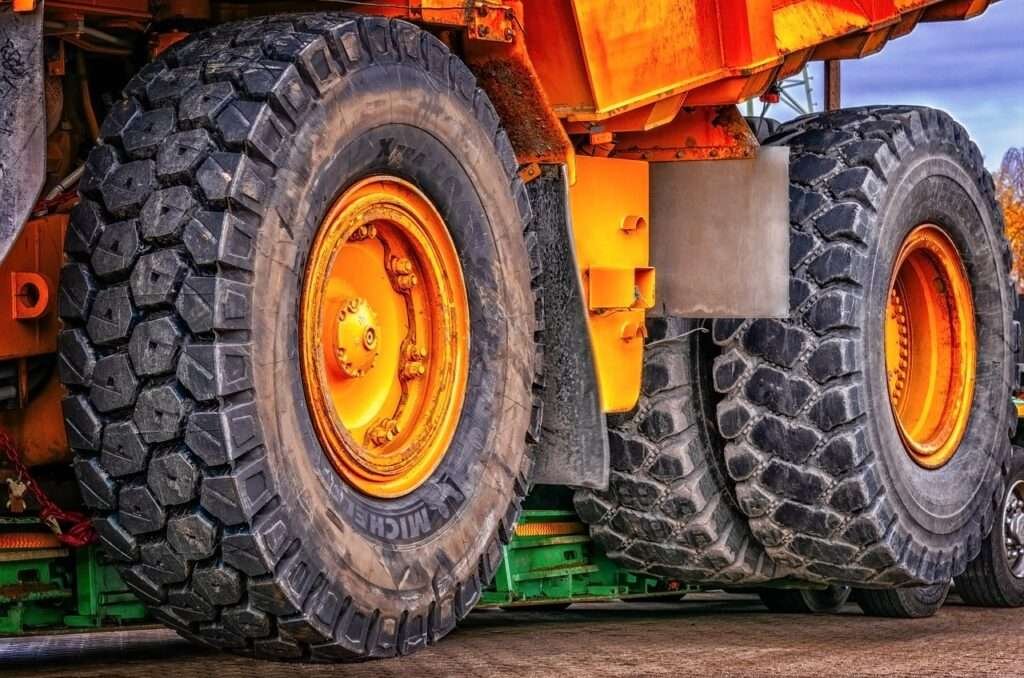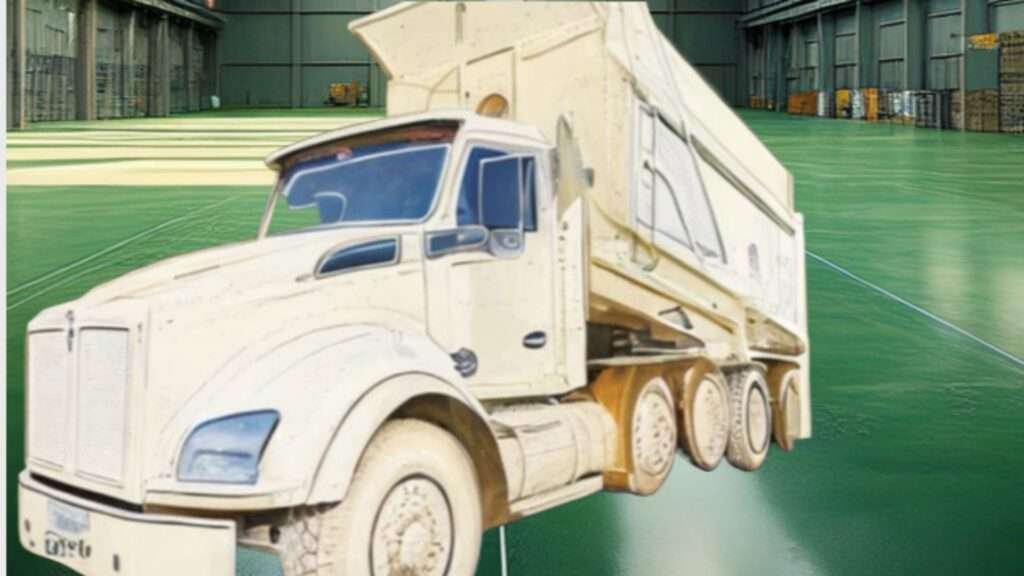Getting In Control Of Truck Tyre Maintenance Costs.
When it comes to managing the expenses of earthmoving and transport companies, one area that is often under-budgeted for and under-estimated is tyre maintenance.
While these companies may have a Computerized Maintenance Management System (CMMS) in place, there is often no specific module designed to address the unique challenges of tyre maintenance.
Earthmoving and transport companies heavily rely on their vehicles and equipment to carry out their operations efficiently.
Tyres play a crucial role in the performance and safety of these vehicles, yet the costs associated with their maintenance are frequently overlooked.
This oversight can lead to unexpected expenses and operational disruptions.
1.0 Failure Modes of Earthmoving & Transport Tyres.
Premature tyre failure can significantly impact the efficiency and profitability of Earthmoving and Transport Companies.
Understanding why their vehicle tyres might prematurely fail will help them develop quality risk based tyre maintenance strategies and maximize the value of their tyre investments.
1.1 Inadequate Maintenance and Inspection.
Regular maintenance and inspection are vital for extending the lifespan of truck tyres. Neglecting these essential tasks can lead to premature failure.
Companies must establish a comprehensive maintenance schedule that includes regular tyre rotations, pressure checks, and visual inspections for signs of wear and tear.
Additionally, monitoring and maintaining proper tyre inflation levels are crucial to prevent uneven wear and reduce the risk of blowouts.
1.2 Overloading and Improper Load Distribution.
Overloading a truck beyond its recommended capacity puts excessive strain on the tyres, leading to premature failure.
Earthmoving and transport companies must adhere to weight limits specified by the manufacturer and ensure proper load distribution.
Uneven weight distribution can cause uneven tyre wear, reducing their lifespan.
Implementing effective load management practices and investing in weighing systems can help prevent overloading and optimise tyre performance.
1.3 Driving Habits and Road Conditions.
The driving habits of truck operators and the conditions of the roads they traverse greatly impact tyre longevity.
Aggressive driving, sudden braking, and excessive speeding can accelerate tyre wear and increase the risk of blowouts.
Similarly, driving on poorly maintained roads with potholes, debris, and sharp objects can cause punctures and damage to the tyres.
Companies should prioritise driver training programs that promote safe driving practices and invest in road maintenance to minimize tyre damage.
1.4 Improper Tyre Selection.
Choosing the right tyres for specific applications is crucial for maximizing their lifespan and performance.
Using the wrong type of tyre for a particular terrain or load can result in premature failure.
Earthmoving and transport companies should consult tyre specialists or manufacturers to determine the most suitable tyres for their specific needs.
Factors such as load capacity requirements, road conditions, and expected mileage should be considered when selecting truck tyres.
1.5 Lack of Retreading and Repair Programs.
Retreading and repairing truck tyres can significantly extend their lifespan and reduce costs for earthmoving and transport companies.
However, the lack of proper retreading and repair programs can lead to premature tyre failure.
Implementing a comprehensive retreading and repair strategy, including regular inspections and retreading intervals, can help companies maximize the value of their tyre investment.
2.0 Be Proactive rather than Reactive with Truck Tyres.
Earthmoving and transport companies must be proactive in addressing the various factors that contribute to premature truck tyre failure.
By prioritising regular maintenance, adhering to weight limits, promoting safe driving practices, selecting appropriate tyres, and implementing retreading and repair programs, companies can ensure they get the maximum value for their money.
Investing in tyre longevity not only improves operational efficiency but also enhances safety and reduces overall costs in the long run.
3.0 The True Cost of Tyre Maintenance.
Proper tyre maintenance involves more than just occasional visual inspections. It requires regular monitoring, rotation, balancing, alignment, and timely replacements.
Neglecting these essential maintenance tasks can result in reduced tyre lifespan, increased fuel consumption, decreased vehicle performance, and even safety hazards.
One of the primary reasons why tyre costs are often under-budgeted for is the misconception that they are a one-time purchase.
However, tyres wear out over time and need to be replaced periodically. Depending on the type of vehicles and the intensity of usage, these costs can quickly add up.
In addition to the direct costs of tyre replacements, there are also indirect costs associated with poor tyre maintenance.
For instance, vehicles with improper tyre alignment or under-inflated tyres can lead to increased fuel consumption.
This not only affects the company’s bottom line but also contributes to environmental pollution.
4.0 The Importance of a Dedicated CMMS Tyre Maintenance Module.
While a CMMS can be a valuable tool for managing maintenance activities, it may not have a specific module for tyre maintenance.
This oversight can make it challenging for earthmoving and transport companies to effectively track and manage their tyre-related expenses.
A dedicated tyre maintenance module within a CMMS can provide several benefits. It allows companies to record and track tyre-related data, such as mileage, tread depth, and tyre rotations.
This information helps in identifying patterns, predicting tyre lifespan, and scheduling maintenance tasks proactively.
Furthermore, a dedicated module can also provide alerts and reminders for routine tyre maintenance tasks, ensuring that they are not overlooked.
It can help in optimising tyre usage, reducing the risk of breakdowns, and improving overall operational efficiency.
5.0 Implementing Effective Tyre Maintenance Strategies.
To ensure that tyre costs are adequately budgeted for and managed, earthmoving and transport companies should consider implementing the following strategies:
5.1 Invest in a dedicated tyre maintenance module:
Look for a CMMS that offers a specific module for tyre maintenance.
This will help in streamlining tyre-related tasks and expenses.
5.2 Regularly monitor tyre condition:
Implement a system for tracking tyre data, including tread depth, mileage, and rotations.
Regular inspections and monitoring can help identify potential issues before they escalate.
5.3 Adopt preventive maintenance practices:
Implement a proactive maintenance schedule that includes tyre rotation, balancing, alignment, and timely replacements.
This will help extend the lifespan of the tyres and reduce unexpected breakdowns.
5.4 Train and educate staff:
Provide training to employees on proper tyre maintenance techniques, including checking tyre pressure, identifying signs of wear, and safe tyre handling practices.
5.5 Partner with a reliable tyre supplier:
Establish a relationship with a trusted tyre supplier who can provide quality products and offer valuable advice on tyre maintenance.
By implementing these strategies and recognizing the importance of tyre maintenance, earthmoving and transport companies can better manage their expenses, improve operational efficiency, and ensure the safety of their vehicles and drivers.
6.0 Conclusion.
Remember, neglecting tyre maintenance may save costs in the short term, but it can lead to significant financial and operational consequences in the long run.
Investing in proper tyre maintenance is an investment in the overall success and sustainability of the company.
If customising your CMMS to contain a specific Tyre Maintenance Module is unlikely but you are interested in a quality Tyre Maintenance Program, consider contacting your local Bridgestone Dealer and enquire about their ‘Total Tyre Management Software Program’.




